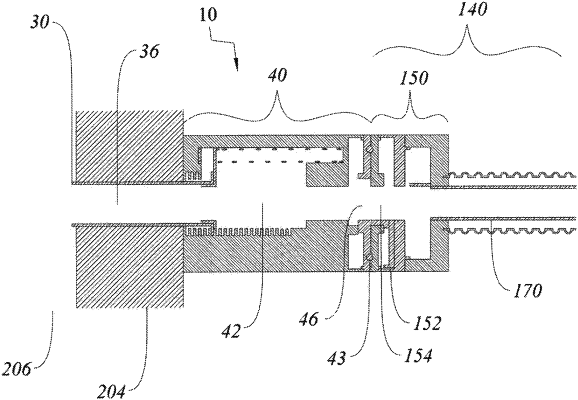| CPC A61M 27/00 (2013.01) [A61B 17/34 (2013.01); A61B 17/3415 (2013.01); A61B 17/3496 (2013.01); A61M 1/04 (2013.01); A61M 25/0606 (2013.01); A61B 90/40 (2016.02); A61B 2017/00809 (2013.01); A61B 2017/3409 (2013.01); A61M 2025/0024 (2013.01); A61M 2210/101 (2013.01)] | 20 Claims |

|
1. A device for forming and/or maintaining a percutaneous access pathway into a body of a patient, comprising:
an access pathway catheter configured to connect an internal portion of a body of a patient to an external environment, the access pathway catheter including a distal opening configured to extend at least partially into the internal portion of the body;
an access pathway port configured to maintain a barrier between the internal portion of the body and the external environment when in a closed position, the access pathway port including at least one distal opening connecting to the access pathway catheter; and
an attachment device connectable to the access pathway port and configured to selectively allow the access pathway port to open by opening one or more doors in the access pathway,
wherein the access pathway port and attachment device cooperate to form a mechanism that only allows the access pathway port to open at the time that the attachment device is attached to the access pathway port, and automatically prohibits disconnection of the attachment device from the access pathway port when the access pathway port is open.
|